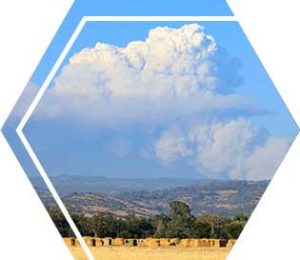
Students will evaluate and compare sources of information presented in different formats to explore what is causing wildfires, the negative impacts of wildfires on biodiversity and human communities, and several potential forest management strategies to mitigate these impacts. Students begin the task by looking at figures and watching a short video clip to see how humans are causing potential wildfires and begin to brainstorm strategies to reduce these impacts. Next, students will evaluate figures and read a series of excerpts related to three common fire management practices - using prescribed burning, letting wildfires burn undisturbed, and suppressing wildfires entirely. By integrating information from all of these sources and comparing relevant characteristics of two different areas of California (i.e., population, wildfire risk, and amount of forest land), students make recommendations about which fire management tools should be implemented in each area to successfully combat the ongoing wildfire crisis.
Three Dimensional Claim
Compare, integrate, and evaluate sources of information presented in different media and formats in order to develop solutions at different scales to a resource management problem where human activities have threatened the sustainability of a natural resource and the surrounding human communities.
This task is intended to elicit student learning of the following NGSS elements for each of the three dimensions:
Disciplinary Core Ideas
ESS3.C: Human Impacts on Earth Systems (HS)
Science and Engineering Practices
Obtaining, Evaluating, and Communicating Information (HS)
Crosscutting Concepts
Scale, Proportion, and Quantity (HS)
California is facing an unprecedented and growing forest and wildfire crisis. Five of CA’s largest fires in modern history burned at the same time, destroying thousands of buildings, forcing hundreds of thousands of people to flee their homes, and exposing millions of residents to dangerously unhealthy air. More than 4 million acres burned across the state, destroying forests, watersheds, and biodiversity. With such a large and ongoing crisis facing California, it is imperative for regions that are plagued by instances of fire to implement land management practices with goals to sustain biodiversity and human communities within the region. As students will discover in their research, most often, a single solution cannot be established as best practice. Instead, it is the incorporation of a combination of management tools that are specific to the ecosystem of the region, accompanied by the development of responsible education about available resources, that make for the most effective solution.
